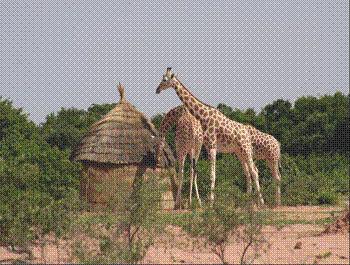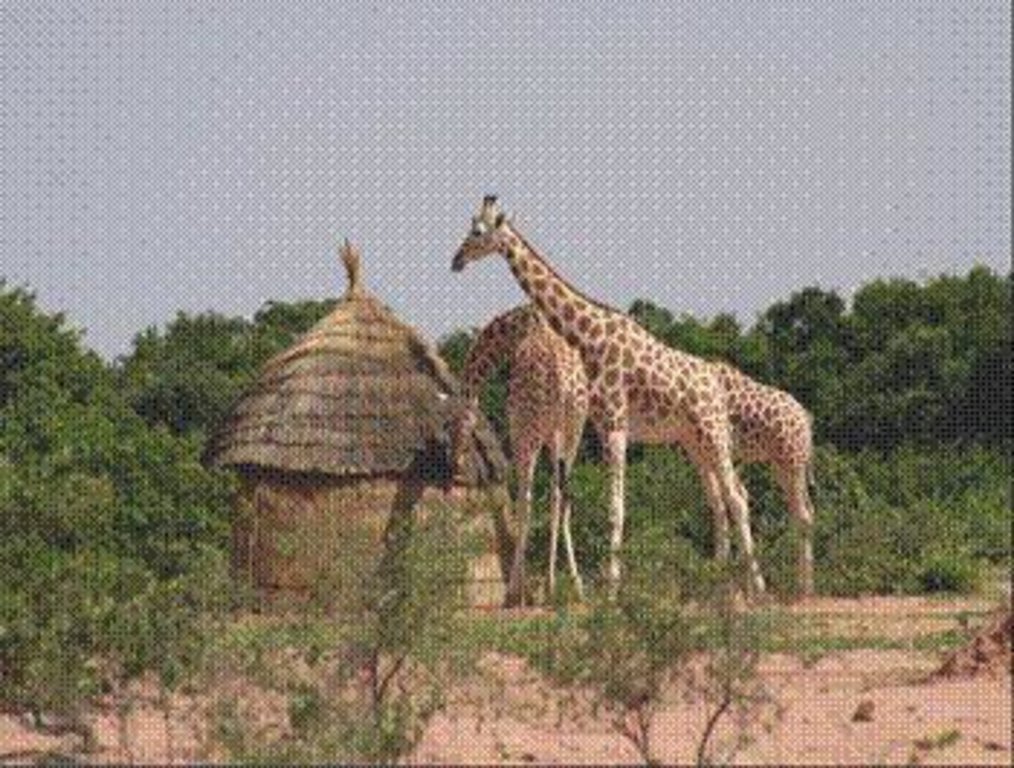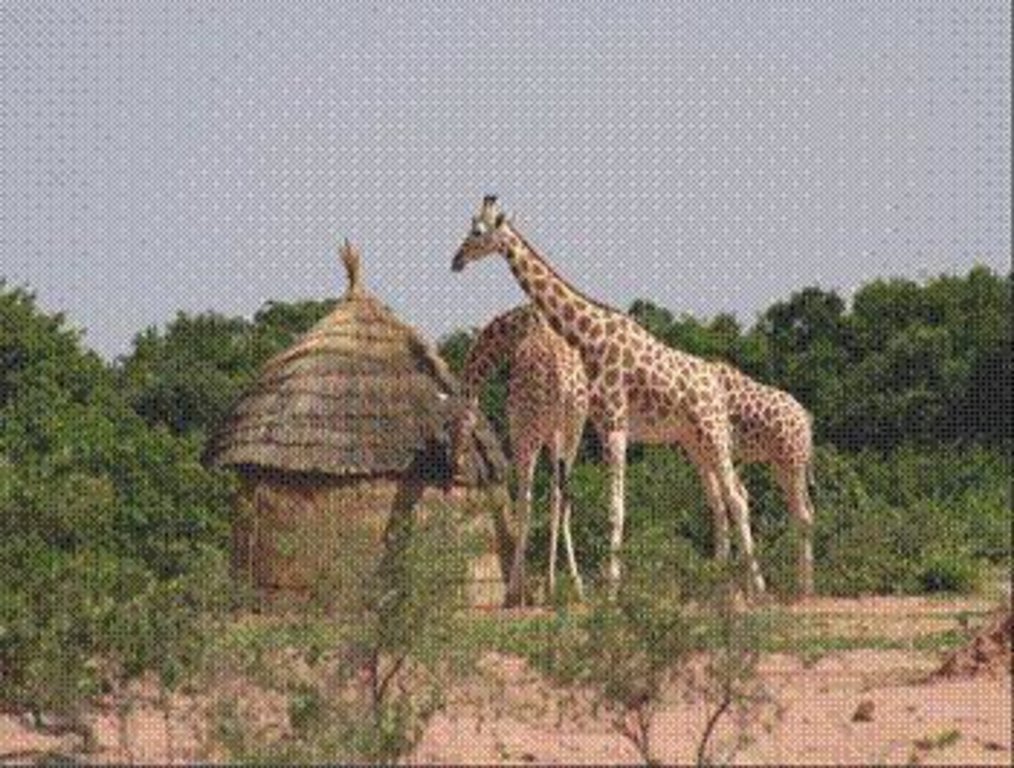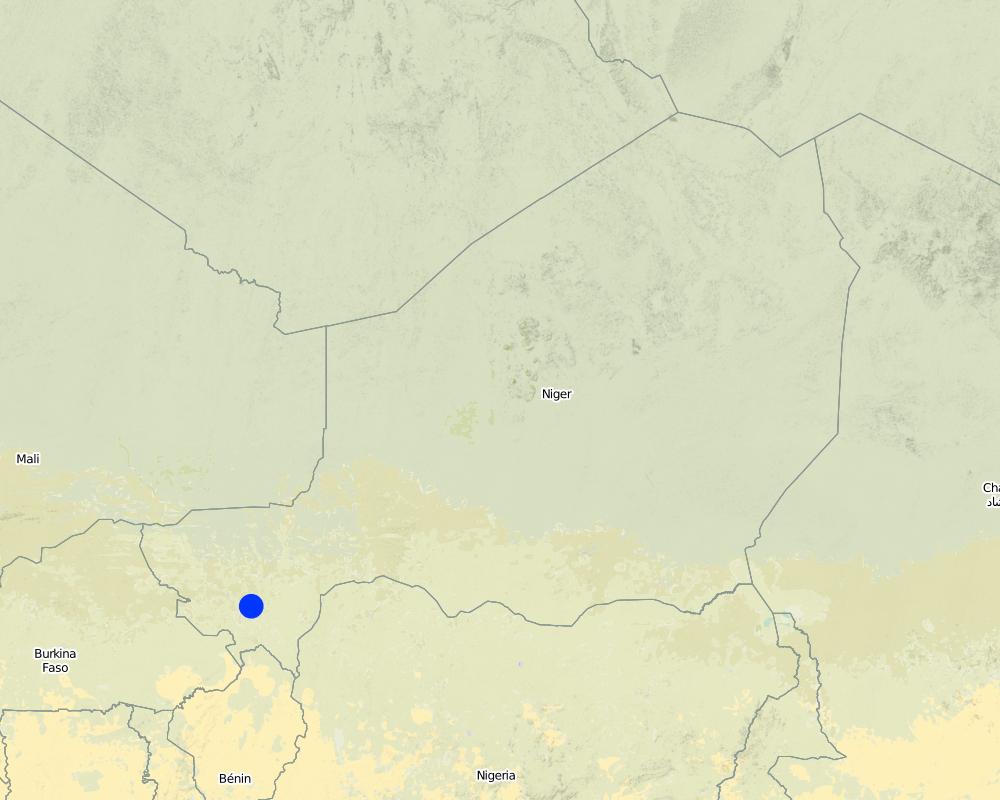Conservation Approach for Kouré Giraffes [Niger]
- Creation:
- Update:
- Compiler: Soumaila Abdoulaye
- Editor: –
- Reviewer: Fabian Ottiger
approaches_2568 - Niger
View sections
Expand all Collapse all1. General information
1.2 Contact details of resource persons and institutions involved in the assessment and documentation of the Approach
SLM specialist:
Oumarou Ahmed
Ministry of Environment, Niger
Niger
Name of the institution(s) which facilitated the documentation/ evaluation of the Approach (if relevant)
GREAD (GREAD) - NigerName of the institution(s) which facilitated the documentation/ evaluation of the Approach (if relevant)
Ministry of Environment and Sustainable Development of Niger (MINEDD) - Niger1.3 Conditions regarding the use of data documented through WOCAT
The compiler and key resource person(s) accept the conditions regarding the use of data documented through WOCAT:
Yes
2. Description of the SLM Approach
2.1 Short description of the Approach
This participatory approach to protect the last population of white giraffes actively involves local people in conservation activities, while simultaneously strengthening local development and promoting ecotourism.
2.2 Detailed description of the Approach
Detailed description of the Approach:
Aims / objectives: The giraffe population in Kouré, Niger is unique because: (1) it includes the last representatives of white giraffes (Giraffa camelopardalis peralta) worldwide; (2) it thrives in an unprotected environment without any natural enemy (besides man); (3) it is in direct contact with rural communities and its livestock. The giraffe, reduced to only 49 individuals in 1996, was in danger of extinction due to a variety of reasons, the main one being the progressive deforestation in their habitat: the brousse tigré savannah vegetation. From 1996-2000, a government programme funded by international development agencies (SNV*, FFEM and the EU) has been carried out to sustainably protect the giraffes and their habitat. This program is based on a participatory approach which actively involves local people in conservation activities, while simultaneously strengthening local development and promoting ecotourism. Its revenues are redistributed to all local actors. A main pillar of the approach was the transfer of responsibilities in natural resources management to local organizations. User groups, a guides’ association, a project steering committee, etc. were formed and its members were trained.
Methods: Tourism and wildlife observation infrastructure was established – including a visitor’s centre, lodging, watch towers, etc – and tourism activities were organized: Guides are trained, registered and organized into an association. They receive a fixed salary and accompany tourists in turns. Furthermore they support project technicians and researchers in monitoring giraffes and collaborate with the network of government-employed foresters, which has been set up to control the conservation of the habitat. Tourists pay an entry fee for wildlife watching tours. The revenues and donations are partly used for management and conservation of the giraffe habitat and partly for socio-economic development of the villages (such as infrastructure projects). These revenues are managed directly by the ‘communes’ (municipalities).
Other important information: Thanks to the protection of the savannah vegetation through enclosures for regeneration, prohibition of cutting and closing down of rural wood markets the giraffe population has recovered considerably, comprising 200 individuals in 2008.
2.3 Photos of the Approach
2.5 Country/ region/ locations where the Approach has been applied
Country:
Niger
Region/ State/ Province:
Tillabéri / Dosso
Further specification of location:
Kouré
Map
×2.6 Dates of initiation and termination of the Approach
Indicate year of initiation:
1996
Year of termination (if Approach is no longer applied):
2000
2.7 Type of Approach
- project/ programme based
2.8 Main aims/ objectives of the Approach
The Approach focused mainly on SLM with other activities (health, education, infrastructure, trade, micro-credit, river works, forest surveillance)
Durable and sustainable conservation of the giraffe population in the Kouré area and protection of their habitat; Building organizational and management capacity of the local population for protecting the giraffes; Fight against poverty by offering supplementary revenue to population through ecotourism (diversification of income).
The SLM Approach addressed the following problems: Conflicts between giraffes and local population (damage to crops); Extinction of giraffes; Deforestation (giraffe habitat deterioration); Rural Poverty; Negative perception of fauna by the population; Absence of titled land ownership and of adapted forestry laws
3. Participation and roles of stakeholders involved
3.1 Stakeholders involved in the Approach and their roles
- local land users/ local communities
Women were also involved
- local government
- national government (planners, decision-makers)
- international organization
3.2 Involvement of local land users/ local communities in the different phases of the Approach
| Involvement of local land users/ local communities | Specify who was involved and describe activities | |
|---|---|---|
| initiation/ motivation | none | Ministries of planning, environment, tourism and artisan, EU, Association of French Volunteers for Progress (AFVP), SNV, beneficiaries. |
| planning | interactive | Kouré Guides Association (AGK), groups of beneficiaries, project advisors and animators |
| implementation | interactive | Kouré Guides Association (AGK), groups of beneficiaries, project advisors and animators |
| monitoring/ evaluation | interactive | AGK, groups of beneficiaries, project advisors and animators, department of Environmental Protection |
| Research | none | French Center for Agricultural Research for Development (CIRAD), University of Niamey, National Agricultural Research Institute of Niger (INRAN), International Union for Conservation of Nature (IUCN) and the International Crops Research Institute for the Semi-Arid Tropics (ICRISAT) |
3.4 Decision-making on the selection of SLM Technology/ Technologies
Specify who decided on the selection of the Technology/ Technologies to be implemented:
- politicians/ leaders
Explain:
Initiation by the Ministries of planning, environment, tourism and artisan, EU, Association of French Volunteers for Progress (AFVP), SNV, beneficiaries
4. Technical support, capacity building, and knowledge management
4.1 Capacity building/ training
Was training provided to land users/ other stakeholders?
Yes
Specify who was trained:
- land users
- field staff/ advisers
If relevant, specify gender, age, status, ethnicity, etc.
members of community management committee, land users (women and men), professional guides, advisors
Form of training:
- on-the-job
- farmer-to-farmer
- demonstration areas
- public meetings
- courses
Subjects covered:
Conservation technologies and SLM, ecotourism, professional guide skills, organization of associations, accountancy, agriculture
4.2 Advisory service
Do land users have access to an advisory service?
Yes
Specify whether advisory service is provided:
- on land users' fields
Describe/ comments:
Name of method used for advisory service: Dissemination of the approach was by rural animation tools (village planning, rapid PRA, etc.).; The Youth Association for Preservation of Natural Resources (AJPREN), U.S. Peace Corps, AFVP and local departments for Environmental Protection ensured a continuous programme of training, environmental education and awareness raising of guides and local people.
4.5 Research
Was research part of the Approach?
Yes
Specify topics:
- sociology
- economics / marketing
- ecology
Give further details and indicate who did the research:
Research had been conducted on-farm in collaboration with local populations. Research topics treated were socio- economical, ecological, technical, giraffe habitat and genetics and agricultural.
Research was carried out on-farm
5. Financing and external material support
5.1 Annual budget for the SLM component of the Approach
If precise annual budget is not known, indicate range:
- 100,000-1,000,000
Comments (e.g. main sources of funding/ major donors):
Approach costs were met by the following donors: international (EU, SNV, FFEM): 100.0%
5.2 Financial/ material support provided to land users
Did land users receive financial/ material support for implementing the Technology/ Technologies?
Yes
5.3 Subsidies for specific inputs (including labour)
- equipment
| Specify which inputs were subsidised | To which extent | Specify subsidies |
|---|---|---|
| machinery | fully financed | |
| tools | fully financed | |
- agricultural
| Specify which inputs were subsidised | To which extent | Specify subsidies |
|---|---|---|
| seeds | fully financed | |
| fertilizers | fully financed | |
- infrastructure
| Specify which inputs were subsidised | To which extent | Specify subsidies |
|---|---|---|
| Tourism | fully financed | |
- other
| Other (specify) | To which extent | Specify subsidies |
|---|---|---|
| Village development funds and Giraffe habitat management | fully financed |
If labour by land users was a substantial input, was it:
- voluntary
5.4 Credit
Was credit provided under the Approach for SLM activities?
Yes
Specify conditions (interest rate, payback, etc.):
repayment conditions: Through village development fund; micro-credit was allocated without interest to women of women groups for agriculture or livestock production. Repayment occurred after six months. After termination of the project, ‘Care International’ continued giving credit however with interest..
6. Impact analysis and concluding statements
6.1 Impacts of the Approach
Did the Approach help land users to implement and maintain SLM Technologies?
- No
- Yes, little
- Yes, moderately
- Yes, greatly
Improved sustainable land management: one director for the planning and management of the giraffe area was appointed.
Did the Approach empower socially and economically disadvantaged groups?
- No
- Yes, little
- Yes, moderately
- Yes, greatly
financial support to women for agricultural production
Did other land users / projects adopt the Approach?
- No
- Yes, little
- Yes, moderately
- Yes, greatly
Adoption of Approach by other land users / projects: the ECOsystèmes Protégés en Afrique Sahélienne (ECOPAS) project adopted (2002) this approach which became the basis for national planning action for giraffes in Niger.
Did the Approach lead to improved livelihoods / human well-being?
- No
- Yes, little
- Yes, moderately
- Yes, greatly
3811 Euros/village had been distributed to the population of 20 villages through village development funds
Did the Approach help to alleviate poverty?
- No
- Yes, little
- Yes, moderately
- Yes, greatly
creation of 13 permanent guide jobs; 900 woman developed agriculture production for marketing
6.2 Main motivation of land users to implement SLM
- increased profit(ability), improved cost-benefit-ratio
- payments/ subsidies
- well-being and livelihoods improvement
6.3 Sustainability of Approach activities
Can the land users sustain what has been implemented through the Approach (without external support)?
- yes
If yes, describe how:
After the project was terminated, land users continued this approach without external support based on local development organizations, Association pour la Sauvegarde des Giraffes du Niger (ASGN) and Kouré Guides Association (AGK). Since 2002, the research component is being continued by ECOPAS / EU.
6.4 Strengths/ advantages of the Approach
| Strengths/ advantages/ opportunities in the compiler’s or other key resource person’s view |
|---|
| Populations organization and mobilization |
| Scientific research tools for decision making |
| Economic, financial and ecological impacts |
6.5 Weaknesses/ disadvantages of the Approach and ways of overcoming them
| Weaknesses/ disadvantages/ risks in the compiler’s or other key resource person’s view | How can they be overcome? |
|---|---|
| Absence of local and national financial contribution | provide regressive grants and promote endogenous funding of activities |
| Uncontrolled fast growth of giraffe population | transfer of giraffes to other protected habitats in West Africa. |
| Approach resulted from exterior initiatives | awareness raising and environmental education to develop ‘conservation behaviour’ in Niger |
7. References and links
7.1 Methods/ sources of information
- field visits, field surveys
- interviews with land users
7.2 References to available publications
Title, author, year, ISBN:
Oumarou A. 2006. Elaboration d’une stratégie de conservation à long terme de la girafe au Niger, communication à l’atelier sur les girafes du Niger organisé du 22-24 novembre 2006 à Niamey (Niger) par le Ministère de l’environnement et de la lutte contre la désertification en partenariat avec ECOPAS/Union EuropéenneCompte rendu de l’atelier international sur la cogestion faune sauvage et bétail, organisé par Abdoulaye Sambo Soumaila et Marlis Lindecke, DED Niger et GTZ Eschborn, février 2001
Title, author, year, ISBN:
Compte rendu de l’atelier international sur la cogestion faune sauvage et bétail, organisé par Abdoulaye Sambo Soumaila et Marlis Lindecke, DED Niger et GTZ Eschborn, février 2001
Links and modules
Expand all Collapse allLinks
No links
Modules
No modules





